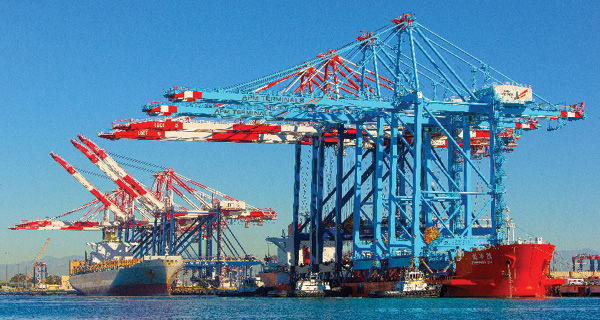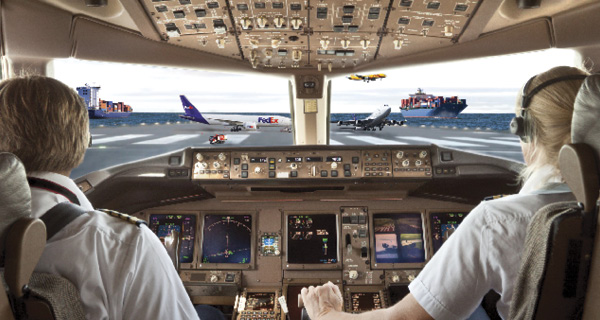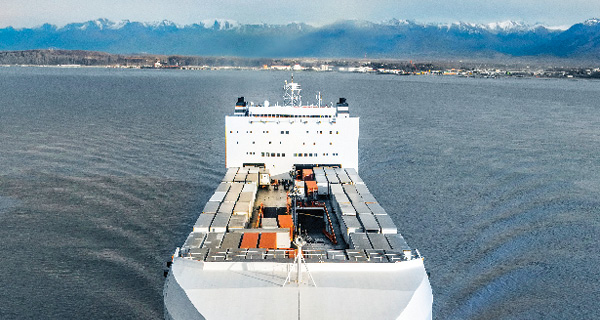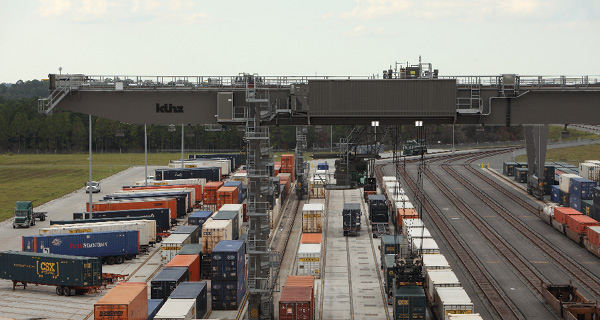Articles
Transportation

Lifting the Fog on Extreme Caution Driving
Inclement weather such as rain, snow, and fog is a constant feature of motor vehicle travel. During poor conditions, commercial truck drivers and their dispatchers must use discretion when deciding whether travel should continue and in what manner. Federal Motor Carrier Safety Regulations (49 C.F.R. § 392.14) specifically address driving in adverse weather conditions and […]
Read More
10 Greenest Ports in America
From Atlantic to Pacific, these ports know how to get their green on.
Read More
How to Handle DOT and GHS Regulations
The Globally Harmonized System of Classification and Labeling of Chemicals (GHS) deadlines that went into effect on June 1 and December 1, 2015, respectively, have significantly impacted U.S. chemical manufacturers and distributors. By now, all chemicals being shipped by manufacturers and distributors should meet the Occupational Safety and Health Administration (OSHA) Hazard Communication Standard (HCS) […]
Read More
INTTRA CEO John Fay: Trading Stocks for Ships
John Fay made his name on Wall Street, at companies that operate digital platforms for trading securities and other financial instruments. In 2014, he moved into the logistics world, taking the helm at INTTRA, a global marketplace for ocean transportation. That’s not as big a leap as it might sound. MORE TO THE STORY: Time […]
Read More
Three Key Points to Communicate to Become Your Customers’ Dream Provider
Communication and transparency are key to being a good partner to your clients. If your logistics organization is in the process of responding to RFP questions from a plum potential customer, positioning your logistics organization as the ideal fit for that customer depends on clear communication of three defining factors of your business: specialization, size, […]
Read More
Meet Me in St. Louis
The most powerful word in the language of logistics is location. It’s a word heard over and over again in St. Louis. But location is just the beginning of the story.
Read More
An Incremental Approach to TMS Acquisition
Q: If savings from a TMS deployment can be significant, what are the benefits of an incremental approach to acquisition? A: It’s true, studies show that savings from a TMS deployment can exceed eight percent of annual freight spend in some verticals. These savings are derived from visibility, analytics, optimization, process improvement and enforcement. In […]
Read More
Intermodal Rail: Moving in the Right Direction
The demand for supply chain efficiency and speed points to investing in and maintaining U.S. rail/intermodal infrastructure.
Read MoreCreating a Lean and Green Culture
Focusing on saving money or going green doesn’t have to be an either/or proposition. Fabio Duque, global head of consumer vertical for APL Logistics, offers tips for creating efficiencies that have both environmental and financial benefits. 1. Re-examine your international expedited transportation mix. If you routinely use air cargo to expedite global shipments, consider switching […]
Read More
Trends—April 2016
What Will Smart Cities Mean For the Supply Chain? One decade ago, we were still getting used to the idea that our mobile phones were smarter than us. Today, thanks to an Internet of Things that links all our computerized devices, we have smart watches, smart toothbrushes, smart cars, smart factories, and countless other interconnected […]
Read More
Global Logistics—April 2016
Air Cargo Struggles to Find its Wings Times are tough for the air cargo industry. Despite the fact that the rest of the world seems to be recovering from the global financial crisis, air freight just can’t seem to sustain any type of upward momentum. The industry has gone from a $67-billion annual profit in […]
Read More
The Trials and Errors of Preventability Determinations
After a motor vehicle accident, it is common for motor carriers to determine whether their driver could have prevented the accident. This positive, safety-oriented process is known as a preventability determination. Carriers make this assessment for several reasons: to evaluate and possibly change company policies and procedures to prevent similar accidents, to determine whether it […]
Read More
Alaska: The Vast Frontier
By offering air, barge, ocean carrier, rail, and trucking services, logistics providers excel at transporting goods to, from, and within Alaska.
Read More
Avoid Pricing Pitfalls When Selecting a Logistics IT Solution
Q: One of the common gripes voiced by organizations implementing logistics IT solutions is that the solution ends up costing more than expected. Why does this seem to happen so frequently? A: The roots of this complaint can be traced back to improperly managed expectations during the sales process. Pricing between providers competing for the […]
Read More
East Coast Warehouse & Distribution CEO Jamie Overley: Driven By Results and Big Dreams
When East Coast Warehouse & Distribution hired Jamie Overley as chief financial officer in 2007, the owners were seeking a leader who could attract and manage capital, and control costs. They got one. Three years after he joined the company, Overley was promoted to CEO. Since then, he has been leading East Coast Warehouse—based in […]
Read More
Trends—March 2016
Trucking Companies Hit the Brakes on Driver Wages The capacity crunch that has plagued the trucking industry since 2013 appears to be easing as poor economic growth in the fourth quarter of 2015 has trucking companies lowering their freight estimates. Only one-third of carriers expect to have any increase in freight volume in 2016, according […]
Read MoreThree Imperatives for Managing Carrier Rates
As the annual freight rate contract negotiation process is underway, it is imperative that shippers fully evaluate options across carriers utilizing knowledge of historical changes and past performance in their trade lanes. The complexity of freight rate contracts places a strong burden on shippers and NVOCCs to comprehensively understand the proposed rates and surcharges, including […]
Read More
Flying High With Electronic Air Waybills
On March 1, 2016, 15 airlines introduced the single-process approach for one of the industry’s most important transportation documents: the electronic Air Waybill (eAWB). Developed by the International Air Transport Association (IATA), in collaboration with industry stakeholders, the eAWB is a digital version of the paper air waybill (AWB). The air cargo industry still relies […]
Read More
Improve Your Supply Chain’s Stability During the Next Procurement Event
Q: Why is now the right time to consider a transportation procurement event? A: The transportation industry consistently faces capacity volatility, demands for improved service, and relentless focus on cost containment. Two years ago, shippers witnessed on-time delivery fall as low as 80 percent while the spread between contracted and spot rates exceeded 25 percent. […]
Read More
Intermodal Transportation: Rise and Shine
Intermodal use continues to grow and is earning its place in the spotlight as a way for shippers to optimize cost and mitigate risk.
Read More